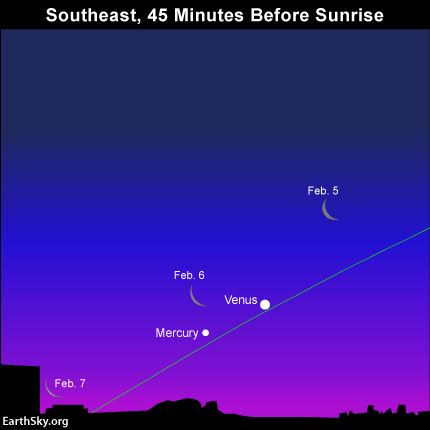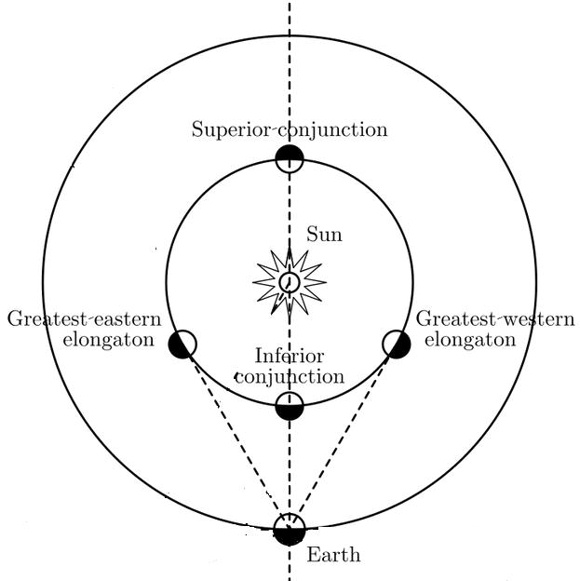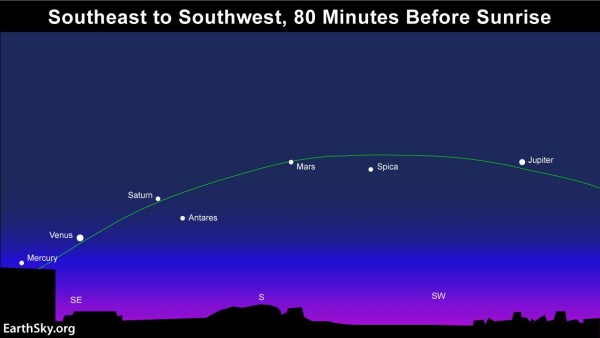Before dawn on February 6, 2016 … think photo opportunity! The crescent moon and the planets Venus and Mercury convene in the morning sky, just as darkness wanes toward dawn on this Saturday morning. Look in the sunrise direction shortly before sunrise, when the sky is still dark enough to see the stars.
If there’s any cloud or haze on your eastern horizon – or if you’ve got an exceptionally bright city sky – binoculars will come in handy!
Depending on your time zone, Mercury reaches its greatest western (morning) elongation from the sun on February 6 or 7. That means that Mercury, the solar system’s innermost planet, swings to the outer edge of its orbit as seen from Earth.
And it means we can see Mercury pretty well – or very well – in the sky before dawn.


Around the time of greatest elongation, Mercury is as far from the sun as it will be, for this apparition. Right now, this planet – sometimes called the most elusive planet since it always stays near the sun in our sky – is rising at or near its maximum period of time before sunrise.
At mid-northern latitudes right now, Mercury rises approximately 80 minutes before the sun. At temperate latitudes in the Southern Hemisphere, Mercury rises nearly two hours before the sun. Click here for recommendations for a sky almanac that can give you the precise rising times for the moon and planets in your sky.
After this, Mercury will start rising closer and closer to the time of sunrise and finally disappear in the sunrise glare, sometime after mid-February. From the Southern Hemisphere, though, you might actually be able to view Mercury in the morning sky until the month’s end.
The five visible planets will adorn the February morning sky until Mercury disappears from view.
And, although the moon will be moving out of the morning sky in a day or two, you can continue to use the dazzling planet Venus to locate nearby Mercury.
The upcoming week is a grand time to spot Mercury near Venus before sunrise, and thus to see all five naked-eye planets in the February morning sky.

Bottom line: The moon has been sweeping past the five planets in the morning sky. O Saturday morning – February 6, 2016 – the moon will be near both Mercury and Venus.












